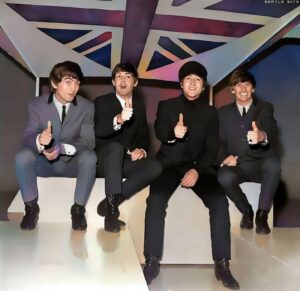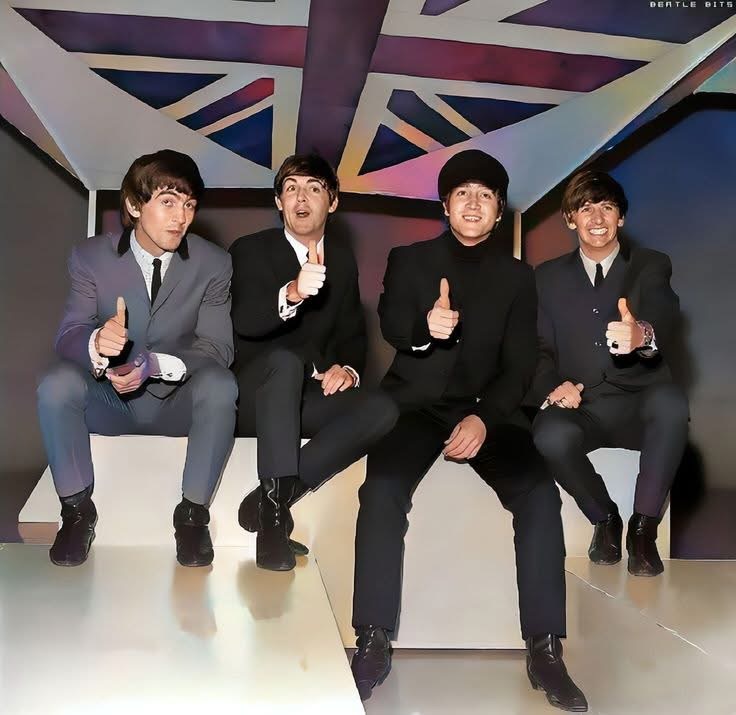Before Beatlemania, before Ed Sullivan, before screaming fans and suits — there was Hamburg. In the early 1960s, The Beatles were just five scrappy young men — John Lennon, Paul McCartney, George Harrison, Pete Best, and Stuart Sutcliffe — thrown into the smoky clubs of Germany’s red-light district, playing up to eight hours a night.

Hamburg wasn’t glamorous. They lived in cramped backrooms behind strip clubs, surviving on cheap meals and sheer adrenaline. But it was here, among the flickering neon lights and rowdy, half-drunk crowds, that the raw ore of The Beatles was forged into something harder, sharper, and ready to change music forever.
**A City That Demanded Everything**
The Beatles’ first arrival in Hamburg in August 1960 wasn’t met with applause. They were outsiders, unknowns, and for most in the clubs, merely background noise. The Reeperbahn and Grosse Freiheit weren’t music venues in the modern sense—they were wild melting pots of sailors, sex workers, tourists, and locals all seeking escape. And the bands were expected to keep the party going, no matter the hour.
Performing nightly in clubs like the Indra and the Kaiserkeller, The Beatles often played from dusk until the early hours of the morning, sets that could last six to eight hours with only brief breaks. Their fingers blistered, their voices strained, and their energy was stretched to the breaking point — but they had no choice but to keep going.
**Living Hard and Playing Harder**
Offstage, the conditions were equally brutal. Their first lodgings were behind the Bambi Kino cinema: cold, damp rooms with no heating and little privacy. The band slept in bunk beds, washed in shared sinks, and grabbed whatever food they could afford, often living on cheap bread rolls, sausages, and beer.
Yet out of this chaos, something special began to form. The endless sets forced them to expand their repertoire, to improvise, and to tighten their playing. They learned to read each other instinctively, picking up on the slightest glance or nod. The band that left Liverpool was raw and disjointed; the band that emerged from Hamburg was cohesive, hungry, and bursting with confidence.
**Transformation in Leather and Sound**
Hamburg also changed their style, thanks in part to local influence. German photographer Astrid Kirchherr and her circle befriended the band, introducing them to the black leather jackets and mop-top haircuts that would soon become iconic. The Beatles’ early, rebellious look wasn’t designed by marketing teams — it grew organically in those smoky clubs, shaped by friendship, heartbreak, and late-night conversations about art and music.
And then there was Stuart Sutcliffe, the original bassist and a gifted painter. He was more artist than musician, but his cool, detached presence helped define their early image. His tragic death at just 21 in 1962 left a void, especially for Lennon, who had considered Sutcliffe his closest friend.
**Finding The Beatles’ Voice**
Musically, Hamburg was where The Beatles became The Beatles. They experimented with harmonies, tested out new arrangements, and added unexpected covers to keep restless crowds entertained. Lennon’s biting wit, McCartney’s melodic drive, Harrison’s quiet but fierce guitar work, Best’s pounding drums, and Sutcliffe’s brooding presence turned them into a force on stage.
It wasn’t all music; there were fights, heartbreaks, and homesickness. But there was also discovery. They realized what it meant to truly perform — to win over an audience, to feel a crowd’s energy shift, and to command attention even when exhaustion begged them to stop.

By the time they left Hamburg for good in late 1962, they were transformed. The tightness, confidence, and style honed in the German clubs prepared them for what was to come: screaming fans, stadium shows, and the global phenomenon of Beatlemania.
Before Ed Sullivan, before the suits and the stadiums, there was Hamburg — raw, loud, and unforgiving. In that crucible, five young men became a band that would change the world.
